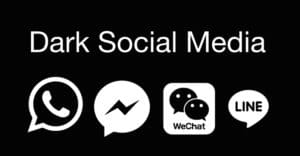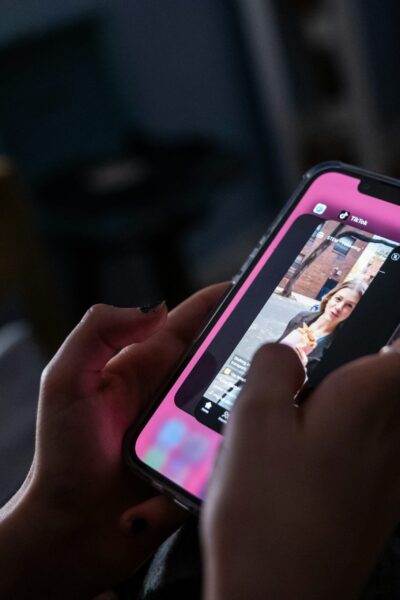“Seek Your Audience” is a column by State of Digital Publishing’s (SODP) Founder, Vahe Arabian. In this column, he provides transparency to the learnings of building an editorial subscription and community and upcoming SODP updates.
Today’s column outlines the rise of dark social and how influencer marketing is playing an important role in building subscription products and branded content services.
This week recaps with a key industry update from the IAB, with the release of their whitepaper, called “Inside Influence – Why Publishers Are Increasingly Turning To Influencer Marketing – And What This Means For Marketers“. During the week, I also spoke with Jayadevan PK Head of Product and Co-Founder of Factor Daily (as part of State of Digital Publishing’s upcoming podcast episode) and conversed with one of our community members over email (who is a consultant/service provider) on publishers priorities for this year.
Let me go through with you why the events of this week have led me to start exploring the mysteries of dark social, how they are connected and what I hope to achieve from this.
Publishers are trying to rely less on platforms and directly connect with their audiences
It starts in 2014 when Alexis C. Madrigal first coined the term “dark social” in an article in The Atlantic, after diving in data from Chartbeat which revealed almost 70% of users having shared content to their personal connections privately either through email, Facebook Messenger, WhatsApp, Slack and other p2p methods. This was shortly validated by Radium One which also provided the exact statistic! Business Insider then confirms messaging apps are outpacing social networking apps in active users in 2016 and more signs of media companies like The Wall Street Journal, The Economist, and the BBC were experimenting on how they can leverage chat for the distribution of content including articles, images, surveys, and video.
There comes a point in any new media where one becomes oversaturated to the point (due to overuse, misuse or commoditisation) that it leads users to alternatives and where the alternative’s technological barriers have softened to an extent where there is the trajectory of surpassing the incumbent.
Facebook realized this earlier this year and put all publishers on their heads by deciding to revamp their Newsfeed algorithm to focus less on brands and emphasizing more on their community groups feature, whilst combating with fake news and publisher integrity.
The evolution of being owned media to platform-centric is in my belief, now leading publishers in forging direct relationships with their audiences.
Catalysts like Facebook’s update drives industry change. I see this as a reset and an exciting time in being in this space, despite all the uncertainty.
Looking at incumbent publishers and how they are leveraging dark social
- Go direct by creating online groups, offline events/meetups and funneling audiences into email subscribers and paid subscribers. So Facebook groups are being increasingly adopted in response to their news algorithm change.
- Bring influencer marketing model in-house and offering branded content solutions. Like SEO’s and brands create microsites (more so 3-4 years ago), they would explore a topic/issue users are speaking about, pitch it to brand partners to participate and once they have approval, go ahead and build up the microsite with long-form content and ongoing feedback and endorsement from influencers. This is a longer-term play, but you also have longer-term client contracts.
So to go back to my conversation with Jayadevan, he elaborated in saying that by being editorially driven, they uncover key tech consumer issues in India through the feedback they receive from the online groups they’ve built and through meetups. Then their marketing and sales team then use this to gather partnership deals from brands to then produce sponsored brand content for audiences on niche properties. Whilst the sales cycle is much longer, this has definitely helped them generate recurring revenue and provide long-term value to their clients.
Coincidently a few days later, the IAB whitepaper was. Check out all their case studies, including WSJ Custom Studio’s, rewards credit card campaign (shown below).
As I reflected on my sites performance, I realized that despite receiving a high response rate in my interview requests which allows me to publish featured interviews daily, only a small number of the respondents actually personally share their interviews to their networks. Ainul Huda’s published interview was a trigger for me to really take action, because despite on not appearing that he has a large follower base on the surface, the referral traffic from social (particularly LinkedIn and Facebook) that the site has received in the past few days, surpassed many influencers interviews who have large followers and our yearly trends piece for the week.
I want others to share their experiences with others and help professionals raise their profiles and with my current approach, it isn’t achieving it’s potential. So it’s time to uncover the mysteries of dark social.
So what are my actions moving forward towards uncovering dark social traffic and its audience?
I’ve already gone ahead and made some tweaks to Google Analytics and created segments in order to better detect ‘dark social’ traffic. With Sumo and the share analytics they provide, based on data, I’ve increased the share options to 11 to further encourage users to tap into their personal social networks by adding Reddit, Flipboard, Facebook Messenger and WhatsApp for mobile and desktop.
There’s going to be a ramp up in building the Slack and Facebook Groups as it hasn’t been a direct focus, given we switched over to a subscription model in late November. As a result, there will be fewer interviews published.
Efforts on content syndication will increase towards Facebook Messenger, Medium and Flipboard, in order to amplify our efforts.
Finally, our influencer marketing approach (which could change) will focus on partnering with tech vendors which can help solve the daily and long-term challenges of digital media publishing professionals.
It’s still a mystery to everyone, however, I hope I can bring some of my findings and hypothesis to light.
So, what are your thoughts on ‘dark social’ and the effect they have on the properties you are working on? Do you have any experiences you’d like to share that you have had so far? Feel free to comment below, or join our Slack Community and share it with your colleagues who are ready to share their lessons with you.











